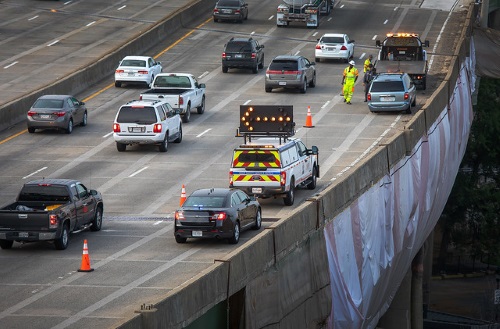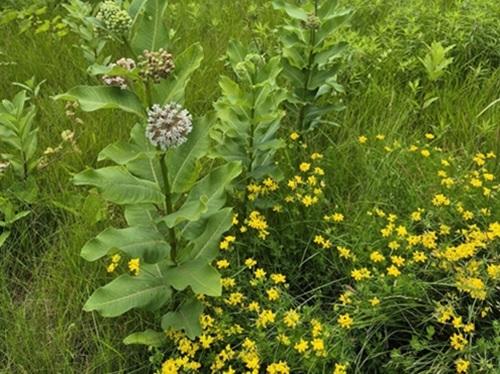At its September 15th meeting, Virginia’s Commonwealth Transportation Board approved $137 million to accelerate a variety of highway safety initiatives across the state and also supported a “partnership agreement” that will study possible roadway changes, land development needs, and projected traffic growth for the Route 28/Dulles Toll Road.
[Above photo by the Virginia DOT.]
Appointed by the governor, the 17-member CTB establishes the administrative policies for Virginia’s transportation system along with allocating highway funding to specific projects plus funding for airports, seaports, and public transportation.

The $137 million in highway safety efforts the board approved – added as amendments to Virginia’s six-year transportation improvement plan – include adding flashing yellow arrows and curve signs to roadways, improving pedestrian crossings, plus adding shoulder wedges and rumble strips on pavement centerline and edgeline locations.
“Ensuring that Virginia’s roadways are safe is our top priority,” noted Shannon Valentine, Virginia’s secretary of transportation, in a statement. “With funding allocated, these proven safety initiatives can be accelerated over the next six years and are forecasted to save more than 60 lives and prevent over 1,200 injuries per year statewide.”
[As an aside, the Virginia DOT is now testing a robotic mowing machine called the “Green Climber” in part to create a safer work environment for its highway crews.]
The board also authorized the Virginia Department of Transportation to enter into an agreement with several entities to study the tolling structure of the Route 28/Dulles Toll Road/Dulles Greenway.
That study – jointly organized by the Virginia DOT, the municipal governments of Loudoun County and Fairfax County, the Metropolitan Washington Airports Authority, and the Toll Road Investors Partnership – aims to identify mitigation strategies to improve operations as well as craft a “master plan” to map out future project efforts.
 States
States


